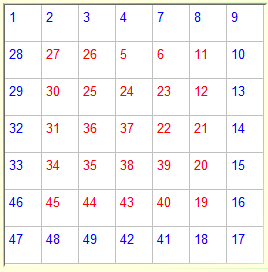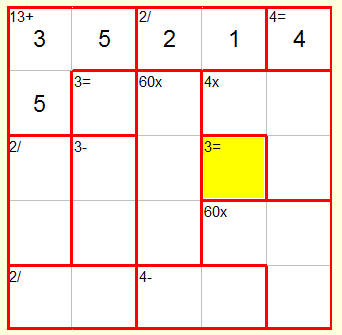What's New - November, 2009
[Home]
 |
 |
|
A Numbrix Puzzle |
Solved! |
November 24, 2009: We're off to spend Thanksgiving with family and then taking a two week repositioning cruise hitting a few western Mediterranean sites in Italy, France and Spain and the across the big waters to New York City. I'm not sure about Internet availability on board, so if email responses are delayed, be patient; I'll catch up when we get back in mid-December.
November 19, 2009: While working on some upcoming changes to our Sound generator program, I discovered that our Metronome program posted several years ago, does not like to play the "click" wav files when run under Vista or Windows 7. Metronome Version 2 adds two additional "click" sound files to address the problem. Click1Vista and Click2Vista files extend the duration of each click to be audible. Vista made major changes to audio processing including moving many functions to run as a service. For some reason, the minimum played sound now seems to be 31 milliseconds.
November 15, 2009: This may be a project first, coding KenKen Version 2, with the "Solve it" button, turned out not to take as long as I though it would! I included one additional sample test puzzle also; a 9x9 hard version that I wouldn't care to solve by hand.
November 13, 2009:

Our AARP Bulletin this month contains this puzzle, shown here
partially solved. It's an example of a puzzle game called KenKen; similar
to Sudoku except that the board is divided into "cages" with an operation and a
target value associated with each cage. The digits 1 to 5 must be placed
on the board so that they can be connected with the given operator to form the
given target value in every cage. In addition, no digit can be repeated in any column or
row. My KenKen Version 1 program is a
simple playable test bed to help investigate algorithms for automatically
solving this type of puzzle "just for fun".
At the puzzle owner's request I am informing you
that KenKenŽ is a registered trademark of Nextoy, LLC and that this site is not
affiliated with Nextoy, LLC or KenKen Puzzle LLC.
November 2, 2009: This card probability question was posted, and partially answered, three years ago.
Given two card rank values, what is the probability that there are one or more occurrences of the two values being adjacent or with only one intervening card in a well shuffled standard 52 card deck?
The original version used generated random card decks to answer the question experimentally by checking lots of decks and counting what proportion of them met the card placement conditions. I had asked then about an analytical solution - it took three years but programmer and fellow puzzleist Mark Rickert came with the key concept (and sample C code) that allows exact solutions. Card Probability Version 2 has my implementation of the algorithm and even throws in Mark's C code translated to Delphi as a bonus!
